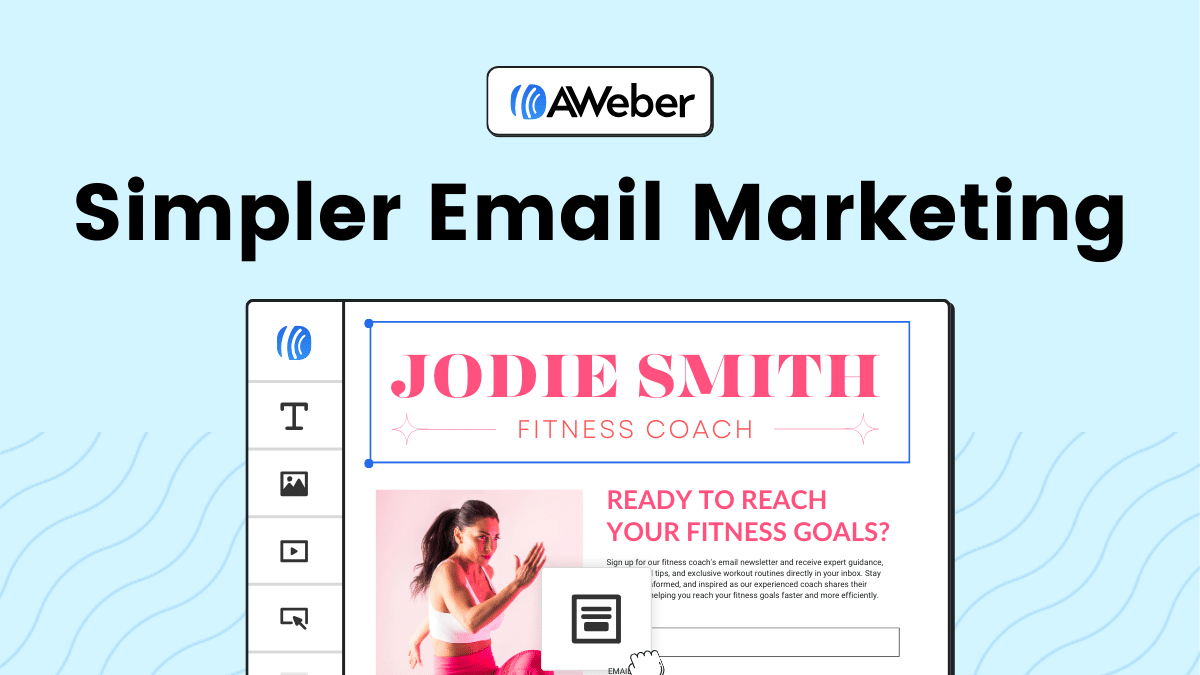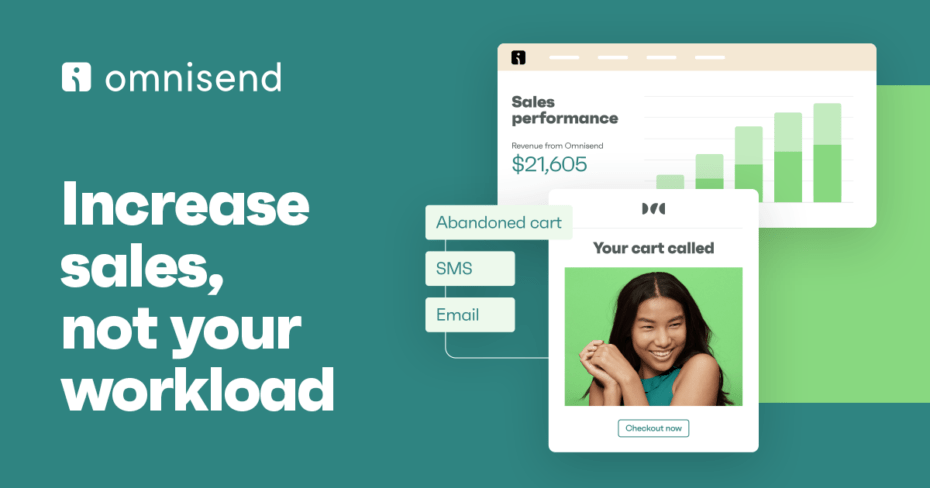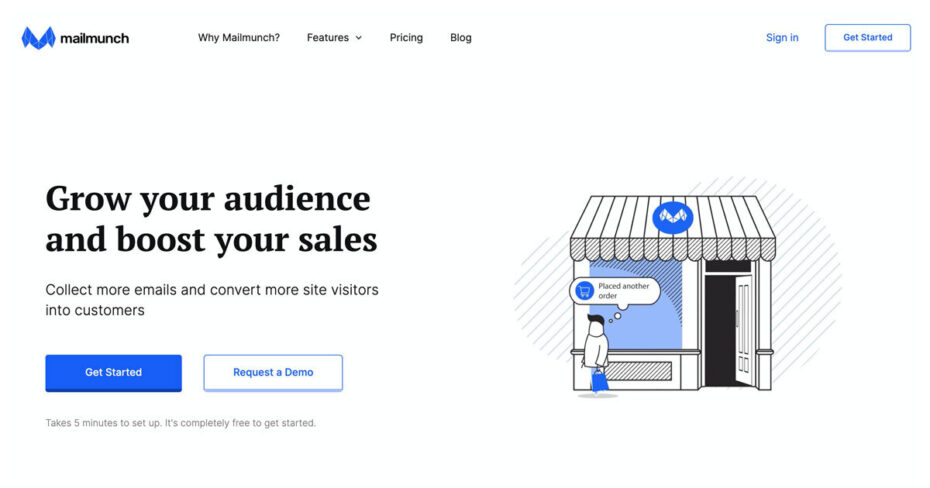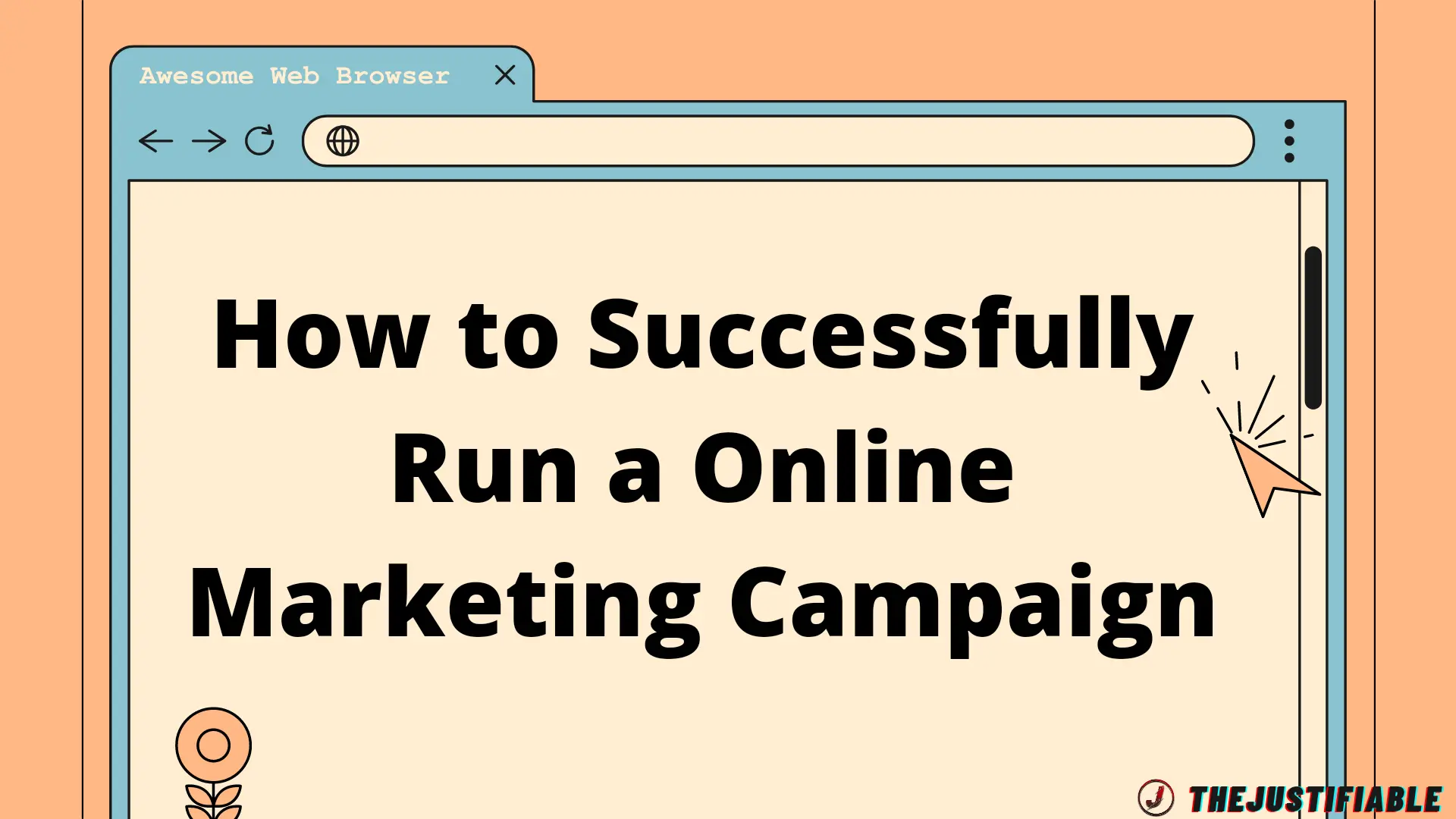Table of Contents
Starting with a solid online marketing strategy is crucial for any business looking to grow and thrive in today’s competitive landscape. In this guide, we will delve into the essential steps and techniques to successfully run an online marketing campaign, focusing on email marketing.
1. Understand the Basics of Online Marketing
Online marketing is essential for businesses aiming to reach a broader audience and increase their sales. It encompasses various digital strategies and techniques used to promote products or services online. By understanding the basics of online marketing, you can develop effective campaigns that drive engagement and conversions.
A successful online marketing campaign starts with a solid foundation in the basics. Knowing how to leverage digital channels like email marketing, social media, and search engines can help you connect with your target audience. Additionally, having a clear understanding of the different components involved in online marketing ensures that your efforts are both efficient and effective.
What is Online Marketing?
Online marketing, also known as digital marketing, refers to the use of digital channels to promote and sell products or services. This includes various strategies such as email marketing, social media marketing, content marketing, and search engine optimization (SEO). The goal is to reach potential customers where they spend most of their time online and to engage them with relevant and valuable content.
One of the primary advantages of online marketing is its ability to target specific audiences. Through data analytics and user behavior tracking, businesses can create personalized marketing messages that resonate with their audience. This level of targeting helps increase the chances of conversion and builds stronger customer relationships.
Moreover, online marketing allows for real-time interaction and engagement. Unlike traditional marketing methods, digital channels provide instant feedback and communication opportunities. This immediacy enables businesses to respond to customer inquiries, address concerns, and foster a sense of community and trust.
Importance of Online Marketing in Business Growth
Online marketing plays a crucial role in the growth and success of modern businesses. It provides a cost-effective way to reach a large audience and generates measurable results. By implementing a well-rounded online marketing strategy, businesses can increase brand awareness, attract new customers, and retain existing ones.
One significant benefit of online marketing is its ability to track and analyze campaign performance. With tools like Kissmetrics, businesses can monitor key metrics such as website traffic, conversion rates, and customer engagement. This data-driven approach allows for continuous optimization and improvement of marketing efforts.
Additionally, online marketing enhances customer reach and accessibility. With the proliferation of smartphones and the internet, consumers are constantly connected. This connectivity means businesses can reach their audience anytime, anywhere. Whether through targeted email campaigns, social media posts, or search engine ads, online marketing ensures your brand remains visible and top-of-mind.
Furthermore, online marketing facilitates direct communication with customers. Social media platforms, in particular, offer a space for businesses to interact with their audience, gather feedback, and build relationships. This direct engagement helps in understanding customer needs and preferences, leading to more effective marketing strategies.
Key Components of an Effective Online Marketing Campaign
An effective online marketing campaign comprises several key components that work together to achieve business objectives. These components include a well-defined target audience, compelling content, strategic distribution channels, and continuous performance analysis.
Firstly, identifying and understanding your target audience is essential. Knowing who your ideal customers are, their preferences, and their online behavior helps tailor your marketing messages. This targeting ensures your content resonates with the right people, increasing the likelihood of engagement and conversions.
Secondly, creating high-quality, engaging content is crucial. Content is the backbone of any online marketing campaign. It includes blog posts, videos, social media updates, emails, and more. The content should be informative, relevant, and valuable to your audience, addressing their needs and pain points.
Thirdly, selecting the appropriate distribution channels is vital. Different channels serve different purposes and audiences. For instance, social media platforms are excellent for building brand awareness and community engagement, while email marketing is effective for nurturing leads and driving conversions. Understanding the strengths of each channel helps in strategic placement and maximization of reach.
Lastly, continuous performance analysis and optimization are necessary for success. Regularly monitoring your campaign’s performance through analytics tools helps identify what’s working and what’s not. This data allows you to make informed decisions and adjustments to improve your strategies, ensuring your online marketing efforts remain effective and impactful.
2. Setting Clear and Achievable Marketing Goals
Setting clear and achievable marketing goals is crucial for the success of any online marketing campaign. By having well-defined goals, you can create a focused strategy that drives results and ensures your efforts are aligned with your overall business objectives. This clarity helps in allocating resources effectively and measuring the impact of your campaigns.
To start, it’s essential to understand your target audience and their needs. Knowing who you are trying to reach allows you to tailor your marketing messages and choose the most effective channels to connect with them. Additionally, establishing measurable objectives ensures you can track progress and make data-driven adjustments to your strategy.
Defining Your Target Audience
Understanding your target audience is the cornerstone of any successful online marketing campaign. Your target audience comprises individuals who are most likely to be interested in your products or services. Identifying these individuals involves analyzing demographics, behaviors, and preferences to create a detailed customer profile.
Begin by conducting market research to gather insights about your audience. Use tools like surveys, social media analytics, and website data to understand their interests, pain points, and online behavior. This research will help you create targeted marketing messages that resonate with your audience and address their specific needs.
Creating buyer personas is another effective strategy for defining your target audience. A buyer persona is a semi-fictional representation of your ideal customer based on real data and research. It includes details such as age, gender, occupation, interests, and challenges. By developing detailed personas, you can personalize your marketing efforts and ensure they appeal to the right people.
Additionally, segmenting your audience into different groups based on specific criteria allows for more tailored marketing. For instance, you can create segments based on demographics, purchasing behavior, or engagement levels. This segmentation helps in delivering more relevant content and offers, increasing the chances of conversion.
Establishing Measurable Objectives
Establishing measurable objectives is essential for tracking the success of your online marketing efforts. Measurable objectives are specific, quantifiable goals that you aim to achieve within a set timeframe. They provide a clear direction and benchmarks for evaluating your campaign’s performance.
Start by setting SMART goals: Specific, Measurable, Achievable, Relevant, and Time-bound. For example, instead of aiming to “increase website traffic,” set a goal to “increase website traffic by 20% within three months.” This specificity allows you to track progress accurately and make necessary adjustments to your strategy.
Utilize key performance indicators (KPIs) to measure your objectives. KPIs are metrics that reflect the success of your marketing activities. Common KPIs include website traffic, conversion rates, email open rates, and social media engagement. Regularly monitoring these metrics helps in identifying trends, understanding what works, and optimizing your campaigns for better results.
Another important aspect of establishing measurable objectives is using analytics tools. Tools like Google Analytics, social media insights, and email marketing platforms provide valuable data on your campaign’s performance. By analyzing this data, you can gain insights into customer behavior, preferences, and the effectiveness of your marketing strategies.
Finally, setting milestones within your objectives helps in breaking down your goals into manageable tasks. For instance, if your objective is to grow your email subscriber list by 50% in six months, set monthly milestones to track incremental progress. This approach keeps your team motivated and focused on achieving the larger goal.
Aligning Marketing Goals with Business Objectives
Aligning your marketing goals with overall business objectives ensures that your online marketing efforts contribute directly to your company’s growth and success. This alignment helps in creating a cohesive strategy that supports the broader vision and mission of your business.
Start by understanding your company’s long-term goals and how marketing can support them. Whether your business objective is to increase revenue, expand market share, or enhance customer satisfaction, your marketing goals should be designed to help achieve these outcomes. This alignment ensures that every marketing activity is purposeful and impactful.
Collaborate with different departments within your organization to ensure everyone is on the same page. For instance, work with the sales team to understand their targets and challenges. This collaboration helps in creating marketing strategies that generate quality leads and support the sales process. Similarly, engaging with the customer service team can provide insights into customer pain points, which can be addressed through targeted marketing campaigns.
Another important aspect of aligning marketing goals with business objectives is regular communication and reporting. Keep stakeholders informed about your marketing activities, progress, and results. Regular reports and meetings help in maintaining transparency and ensuring that marketing efforts are aligned with the company’s priorities and goals.
Finally, be flexible and adaptable in your approach. Business objectives can evolve over time, and your marketing goals should be agile enough to adjust accordingly. Regularly review and revise your marketing strategy to ensure it remains aligned with the changing business landscape and continues to drive desired outcomes.
3. Crafting a Compelling Email Marketing Strategy
A compelling email marketing strategy is essential for any successful online marketing campaign. Email marketing remains one of the most effective channels for reaching and engaging your audience. By crafting a well-thought-out strategy, you can maximize your efforts and achieve impressive results.
To start, focus on building a quality email list. This is the foundation of any email marketing campaign. Additionally, creating engaging content and leveraging personalization and segmentation techniques will help you connect with your audience on a deeper level.
Email Marketing Recommendations
 Aweber
|  Omnisend
|  Mailmunch
|
Building a Quality Email List
Building a quality email list is crucial for the success of your email marketing strategy. A well-curated list ensures that your messages reach the right people who are genuinely interested in your offerings. Start by using ethical methods to gather email addresses, such as opt-in forms on your website, social media campaigns, and content upgrades.
Offer valuable incentives to encourage sign-ups. Free eBooks, exclusive discounts, and informative webinars are effective ways to attract subscribers. Make sure your sign-up forms are user-friendly and clearly communicate the benefits of joining your email list.
Maintain your email list by regularly cleaning it. Remove inactive subscribers and invalid email addresses to ensure your messages are delivered to engaged recipients. This practice helps improve your email deliverability rates and overall campaign performance.
Segment your email list based on various criteria such as demographics, behavior, and engagement levels. Segmentation allows you to send targeted messages that resonate with specific groups, increasing the likelihood of engagement and conversions.
Creating Engaging Email Content
Creating engaging email content is key to capturing your audience’s attention and driving action. Your content should be relevant, valuable, and tailored to your subscribers’ interests. Start by crafting compelling subject lines that entice recipients to open your emails. Use power words and personalization to make your subject lines stand out.
In the body of your email, focus on delivering high-quality content that addresses your audience’s needs and pain points. Use a conversational tone to make your emails feel personal and relatable. Incorporate storytelling elements to make your messages more engaging and memorable.
Include clear and compelling calls-to-action (CTAs) that guide your readers towards the desired action. Whether it’s visiting your website, making a purchase, or downloading a resource, your CTAs should be prominent and persuasive.
Visual elements such as images, videos, and infographics can enhance your email content and make it more visually appealing. However, ensure that these elements do not overshadow your message and that your emails remain easy to read on all devices.
Personalization and Segmentation Techniques
Personalization and segmentation are powerful techniques that can significantly enhance the effectiveness of your email marketing strategy. By tailoring your messages to individual subscribers, you can create a more personalized and relevant experience.
Start by collecting data on your subscribers’ preferences, behavior, and demographics. Use this data to segment your email list into different groups based on common characteristics. For example, you can create segments for new subscribers, loyal customers, and inactive users.
Personalize your emails by using the recipient’s name, sending content based on their past behavior, and offering personalized recommendations. Personalized emails have been shown to increase open rates, click-through rates, and conversions.
Dynamic content is another effective way to personalize your emails. This technique involves displaying different content to different subscribers based on specific criteria. For example, you can show different product recommendations based on the recipient’s purchase history.
Regularly analyze the performance of your segmented and personalized campaigns to identify what works best. Use this data to refine your strategy and continuously improve your email marketing efforts.
4. Leveraging Automation in Email Marketing
Leveraging automation in email marketing can streamline your efforts and improve efficiency. Email automation allows you to send timely, relevant messages to your subscribers without manual intervention. This ensures that your audience receives the right message at the right time, enhancing engagement and conversions.
To start, understand the benefits of email automation. Automated emails save time, increase consistency, and allow for more personalized communication. Additionally, they can help nurture leads, recover abandoned carts, and re-engage inactive subscribers.
Benefits of Email Automation
Email automation offers numerous benefits that can enhance your online marketing strategy. One of the primary advantages is time savings. By automating repetitive tasks, you can focus on other important aspects of your marketing efforts.
Automated emails also provide consistency. They ensure that your subscribers receive timely and relevant messages, leading to higher engagement and better relationships with your audience. Consistent communication helps build trust and loyalty.
Another benefit is personalization. Automated emails can be tailored to individual subscribers based on their behavior, preferences, and interactions with your brand. This level of personalization enhances the user experience and increases the chances of conversion.
Finally, automation allows for better tracking and analysis. You can monitor the performance of your automated campaigns and make data-driven decisions to optimize your strategy. This continuous improvement leads to more effective and efficient email marketing.
Popular Email Automation Tools
There are several popular email automation tools available that can help you streamline your email marketing efforts. These tools offer a range of features to automate your campaigns and improve their effectiveness.
Mailchimp is one of the most widely used email automation platforms. It offers a user-friendly interface, advanced segmentation options, and robust analytics. Mailchimp also integrates with various other marketing tools, making it a versatile choice for businesses of all sizes.
Another popular tool is ActiveCampaign. It provides powerful automation capabilities, including dynamic content and behavior-based triggers. ActiveCampaign also offers CRM features, making it a comprehensive solution for managing customer relationships.
HubSpot is another excellent option for email automation. It offers a range of features, including advanced segmentation, A/B testing, and detailed analytics. HubSpot’s integrated marketing suite allows for seamless coordination between your email marketing and other marketing efforts.
Constant Contact is known for its ease of use and extensive template library. It offers automation features such as autoresponders and behavioral triggers. Constant Contact is a great choice for small businesses and beginners in email marketing.
Setting Up Automated Email Campaigns
Setting up automated email campaigns involves several steps to ensure they run smoothly and effectively. Start by identifying the goals of your automated campaigns. Whether it’s welcoming new subscribers, nurturing leads, or recovering abandoned carts, having clear objectives will guide your setup process.
Next, choose the appropriate triggers for your automated emails. Triggers can be based on subscriber actions such as signing up for your newsletter, making a purchase, or abandoning a shopping cart. Setting the right triggers ensures that your emails are sent at the most relevant times.
Create engaging and personalized email content for your automated campaigns. Use dynamic content and personalization techniques to tailor your messages to individual subscribers. Ensure your emails have clear CTAs that guide recipients towards the desired action.
Test your automated campaigns before launching them. Check for any issues such as broken links, incorrect personalization, or formatting errors. Testing helps ensure that your emails are delivered correctly and provide a seamless experience for your subscribers.
Monitor the performance of your automated campaigns regularly. Use analytics tools to track key metrics such as open rates, click-through rates, and conversions. Analyze this data to identify areas for improvement and optimize your campaigns for better results.
5. Analyzing and Optimizing Email Campaign Performance
Analyzing and optimizing email campaign performance is crucial for maximizing the effectiveness of your online marketing efforts. By regularly evaluating your email campaigns, you can identify areas for improvement and ensure you are achieving your marketing goals. This process involves tracking key metrics, using specialized tools, and implementing strategies for continuous enhancement.
Understanding how your email campaigns perform allows you to make data-driven decisions. By analyzing the right metrics, you can gain insights into your audience’s behavior and preferences, helping you tailor your content and approach. Optimizing your campaigns based on these insights can lead to higher engagement, better deliverability, and increased conversions.
Key Metrics to Track
Tracking key metrics is essential for evaluating the success of your email marketing campaigns. These metrics provide valuable insights into how your audience interacts with your emails and where improvements can be made.
Open rate is one of the primary metrics to track. It indicates the percentage of recipients who opened your email. A high open rate suggests that your subject lines are compelling and your audience is interested in your content. To improve open rates, focus on creating engaging subject lines that capture attention.
Click-through rate (CTR) measures the percentage of recipients who clicked on links within your email. A high CTR indicates that your content is relevant and engaging. To boost CTR, ensure your emails contain clear calls-to-action and valuable content that encourages clicks.
Conversion rate is the percentage of recipients who completed a desired action, such as making a purchase or filling out a form, after clicking through your email. This metric directly reflects the effectiveness of your email campaign in driving results. Optimize your conversion rate by aligning your email content with your landing pages and ensuring a seamless user experience.
Bounce rate represents the percentage of emails that were not delivered successfully. A high bounce rate can negatively impact your sender reputation and email deliverability. To reduce bounce rates, maintain a clean email list by regularly removing invalid addresses and using double opt-in methods for new subscribers.
Tools for Email Campaign Analysis
Using the right tools for email campaign analysis can significantly enhance your ability to track and optimize your performance. These tools offer detailed insights and metrics that help you understand how your campaigns are performing and where improvements can be made.
Google Analytics is a powerful tool that integrates with your email marketing platform to provide comprehensive data on user behavior. It tracks metrics such as website traffic, conversion rates, and user engagement, giving you a holistic view of your email campaign’s impact on your overall online marketing strategy.
Mailchimp is a popular email marketing platform that offers robust analytics features. It provides detailed reports on open rates, click-through rates, and conversion rates. Mailchimp’s analytics dashboard also includes insights into subscriber behavior, helping you understand how your audience interacts with your emails.
HubSpot is another excellent tool for email campaign analysis. It offers advanced tracking and reporting features, including detailed metrics on email performance, user engagement, and conversion rates. HubSpot’s integrated marketing suite allows you to analyze your email campaigns in the context of your broader marketing strategy.
Litmus is a specialized tool for email testing and analytics. It provides insights into email deliverability, design performance, and engagement metrics. Litmus also offers features for A/B testing and email rendering, ensuring your emails look great and perform well across different devices and email clients.
Strategies for Continuous Improvement
Continuous improvement is key to maintaining the effectiveness of your email marketing campaigns. By regularly evaluating your performance and making data-driven adjustments, you can enhance your results and achieve your marketing goals.
A/B testing is a powerful strategy for continuous improvement. It involves creating two versions of an email with slight variations, such as different subject lines or call-to-action buttons, and testing them with a small segment of your audience. Analyzing the performance of each version helps you identify what works best and apply those insights to future campaigns.
Personalization is another effective strategy. Tailoring your emails to individual recipients based on their preferences, behavior, and demographics can significantly increase engagement and conversion rates. Use data from your email marketing platform and CRM to create personalized content that resonates with your audience.
Segmentation allows you to send targeted emails to specific groups within your audience. By segmenting your email list based on criteria such as past purchases, engagement levels, or geographic location, you can deliver more relevant and personalized content. This targeted approach leads to higher engagement and better campaign performance.
Regularly review and update your email marketing strategy based on the insights you gain from your analytics. Stay informed about industry trends and best practices, and be willing to experiment with new approaches. Continuous learning and adaptation are crucial for staying ahead in the competitive landscape of online marketing.
6. Integrating Email Marketing with Other Channels
Integrating email marketing with other channels can amplify your online marketing efforts and create a cohesive, multi-channel strategy. By combining email with social media, content marketing, and cross-promotion strategies, you can enhance your reach, engagement, and overall effectiveness.
A well-integrated marketing strategy ensures that your audience receives consistent messaging across different platforms. This consistency helps build brand recognition and trust, making your marketing efforts more impactful. Additionally, integrating email with other channels allows for better tracking and analysis, providing a more comprehensive view of your campaign performance.
Combining Email Marketing with Social Media
Combining email marketing with social media can significantly enhance your online marketing efforts. These two powerful channels can work together to increase engagement, expand your reach, and drive conversions.
Start by promoting your email content on social media. Share snippets of your newsletters, special offers, or blog posts on platforms like Facebook, Twitter, and LinkedIn. Encourage your social media followers to subscribe to your email list by highlighting the benefits they will receive, such as exclusive content or discounts.
Integrate social media sharing buttons into your emails. This allows your subscribers to easily share your content with their networks, increasing your reach and attracting new subscribers. Additionally, consider running social media contests or giveaways that require participants to join your email list, boosting your subscriber base.
Use email to promote your social media profiles and encourage subscribers to follow you. Include links to your social media pages in your email signature and newsletters. Highlight the unique content and engagement opportunities available on your social media platforms to entice subscribers to connect with you there.
Leverage user-generated content from social media in your emails. Showcase customer testimonials, reviews, or social media posts that feature your products. This adds authenticity to your emails and encourages more interaction with your brand across channels.
Using Email to Support Content Marketing Efforts
Email marketing can be a powerful tool to support your content marketing efforts. By promoting your content through email, you can drive traffic to your website, increase engagement, and nurture leads.
Start by using your email newsletters to share your latest blog posts, articles, and videos. Provide a brief summary or teaser of the content with a link to read or watch more on your website. This not only drives traffic but also keeps your audience informed and engaged with your content.
Create dedicated email campaigns for your cornerstone content, such as eBooks, whitepapers, or case studies. Promote these valuable resources to your email list and encourage downloads. This helps position your brand as a thought leader and generates leads for your business.
Segment your email list based on content preferences and behavior. Send targeted content recommendations to different segments based on their interests and past interactions with your content. Personalized content recommendations increase engagement and ensure your subscribers receive relevant information.
Use email to gather feedback on your content. Include surveys or polls in your emails to ask subscribers about their preferences and what topics they would like to see more of. This feedback helps you create more targeted and valuable content, enhancing your overall content marketing strategy.
Cross-Promotion Strategies for Maximum Impact
Cross-promotion strategies can amplify the impact of your email marketing efforts by leveraging other marketing channels. By promoting your email content across different platforms, you can increase visibility, engagement, and conversions.
Collaborate with other businesses or influencers to cross-promote each other’s email lists. Partnering with complementary brands can help you reach new audiences and gain more subscribers. Promote each other’s content through email newsletters, social media, and blog posts to maximize exposure.
Use your website to promote your email list. Include sign-up forms on high-traffic pages, such as your homepage, blog, and checkout page. Offer incentives, such as exclusive discounts or free resources, to encourage visitors to subscribe. Highlight the benefits of joining your email list, such as receiving valuable content and special offers.
Incorporate email sign-up prompts in your content. For example, include a call-to-action at the end of your blog posts or videos, inviting readers or viewers to subscribe for more content. Use pop-up forms or slide-ins on your website to capture email addresses from engaged visitors.
Leverage paid advertising to grow your email list. Run targeted ads on platforms like Facebook, Instagram, and Google to promote your email sign-up incentives. Use compelling visuals and persuasive copy to attract subscribers. Ensure that your landing pages are optimized for conversions, making it easy for visitors to join your email list.
7. Staying Compliant with Email Marketing Laws and Regulations
Staying compliant with email marketing laws and regulations is essential for maintaining trust and avoiding costly penalties. Email marketing laws are designed to protect consumers from spam and ensure their privacy. By understanding and adhering to these regulations, you can build a positive reputation and foster stronger relationships with your audience.
Compliance involves following guidelines set by laws such as GDPR (General Data Protection Regulation) and the CAN-SPAM Act. These regulations outline the rules for obtaining consent, handling personal data, and managing email communications. Being aware of these requirements and implementing best practices ensures your email marketing campaigns are lawful and effective.
Understanding GDPR and CAN-SPAM Act
Understanding GDPR and the CAN-SPAM Act is crucial for email marketers. These regulations have specific requirements that must be followed to avoid penalties and maintain compliance.
The General Data Protection Regulation (GDPR) is a comprehensive data protection law that applies to businesses operating within the European Union (EU) or targeting EU residents. GDPR mandates that businesses obtain explicit consent from individuals before collecting, storing, or using their personal data. This means your email subscribers must actively opt-in to receive your emails. GDPR also gives individuals the right to access, rectify, and erase their data, and businesses must comply with these requests promptly.
The CAN-SPAM Act is a U.S. law that sets the rules for commercial email communications. It requires businesses to provide clear and accurate information about the sender, include a valid physical address, and offer a straightforward way for recipients to opt-out of future emails. The CAN-SPAM Act also prohibits deceptive subject lines and ensures that commercial emails are clearly identified as advertisements.
Both GDPR and the CAN-SPAM Act emphasize the importance of transparency and consent in email marketing. Non-compliance can result in hefty fines and damage to your brand’s reputation. Therefore, it is essential to familiarize yourself with these regulations and integrate their requirements into your email marketing strategy.
Best Practices for Email Marketing Compliance
Implementing best practices for email marketing compliance ensures that your campaigns adhere to legal requirements and foster trust with your audience. Here are some key strategies to consider:
First, always obtain explicit consent from your subscribers. Use clear and concise opt-in forms that explain what kind of content they will receive and how often. Avoid pre-checked boxes and ensure that the opt-in process is voluntary and straightforward.
Second, provide an easy and visible way for subscribers to opt-out. Include an unsubscribe link in every email you send, and make sure it is simple for recipients to remove themselves from your list. Honor unsubscribe requests promptly to maintain compliance and respect your audience’s preferences.
Third, be transparent about your identity and contact information. Include a valid physical address and your business name in your emails. This transparency builds trust and ensures compliance with regulations like the CAN-SPAM Act.
Fourth, regularly review and update your email list. Remove inactive or unengaged subscribers to maintain a healthy and engaged list. Use double opt-in methods to verify email addresses and ensure that your subscribers genuinely want to receive your emails.
Avoiding Common Legal Pitfalls in Email Campaigns
Avoiding common legal pitfalls in email campaigns is essential to stay compliant and maintain your audience’s trust. Here are some pitfalls to watch out for and how to avoid them:
First, avoid using deceptive subject lines and misleading content. Ensure that your subject lines accurately reflect the content of your emails. Misleading your subscribers can lead to complaints and damage your reputation. Transparency and honesty are key to building trust and ensuring compliance.
Second, do not buy email lists. Purchasing email lists may seem like a quick way to grow your subscriber base, but it often leads to low engagement and high complaint rates. Additionally, using purchased lists can violate GDPR and CAN-SPAM Act regulations, as the individuals on these lists have not given explicit consent to receive your emails.
Third, be cautious with data collection and storage. Only collect data that is necessary for your email marketing efforts and ensure that it is stored securely. Implement robust data protection measures to prevent unauthorized access and breaches. Regularly audit your data practices to ensure compliance with GDPR and other data protection laws.
Fourth, keep up-to-date with changes in email marketing laws and regulations. Laws like GDPR and the CAN-SPAM Act can evolve, and staying informed helps you remain compliant. Subscribe to industry newsletters, attend webinars, and consult legal experts to ensure your email marketing practices are current and compliant.






